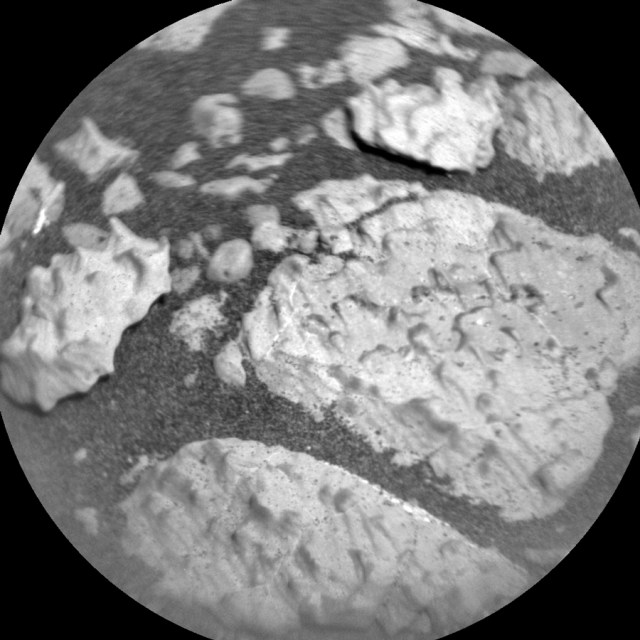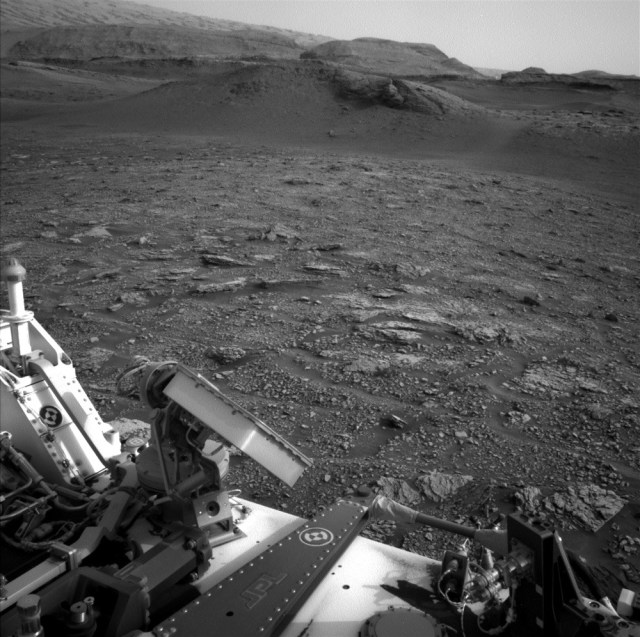
ChemCam’s One-Hour Science Block at “Glasgow” Site Provides Insights into Nodule Chemistry and Fracture Influence
The “Glasgow” site is currently undergoing a one-sol plan, which includes a one-hour science block with ChemCam observations of three nearby targets: bedrock target “Gutcher,” nodular bedrock target “Lochbuie,” and vein target “Thistle Street.” The name “Lochbuie” is familiar as Curiosity has been analyzing bedrock targets containing nodules in this area for the past few weeks. The science team is particularly interested in the fractured bedrock in the area and wants to assess whether the concentration and chemistry of nodules vary with distance from nearby fractures.
To maintain continuity, targets in this vicinity are named with “Loch” in their names, including “Lochbuie,” which is the latest addition to the list that includes targets like “Loch na Keal,” “Loch Olabhat,” “Loch Trool,” and “Bishops Loch.”
ChemCam’s Remote Micro Imager captured an image showing the nodular texture in the “Loch Olabhat 2” target, demonstrating the small, dark laser pits created by ChemCam that track horizontally across the nodule-rich rock in the center-right of the image. This exploration is part of an ongoing drill campaign at the site, with a focus on collecting chemistry data through observations and analysis of different targets in the area. By studying the variation in nodules with distance from fractures in the bedrock, the science team aims to gather valuable insights into

